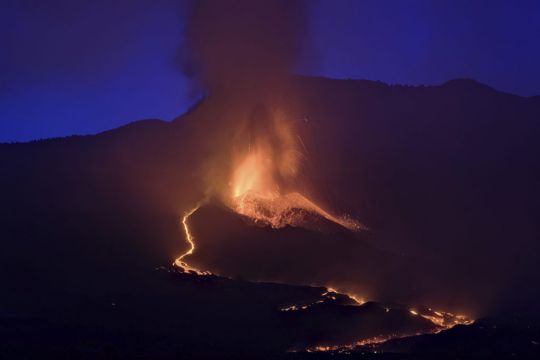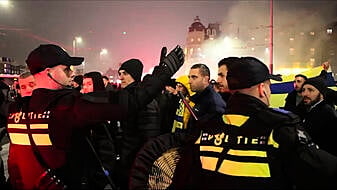An ash cloud was preventing flights on and off the Spanish island of La Palma on Sunday as molten rock continued to be flung high into the air from an erupting volcano.
No flights arrived into or departed from the airport, despite emergency workers clearing the ash from the runway.
Islanders faced a mixed picture of good and bad news, with some evacuees allowed to return to their homes amid low seismic activity while authorities took stock of the damage caused. Around 430 buildings have so far been destroyed in the countryside.
The volcano on La Palma, which is part of the volcanic Canary Islands off northwest Africa and is home to about 85,000 people, erupted on September 19. The prompt evacuations of more than 6,000 people helped avoid casualties.

Life on the rest of La Palma, which is roughly 22 miles (35km) long and 12 miles (20km) wide at its broadest point, has been largely unaffected.
“We’re not in a state of total alarm,” the technical director of the volcano emergency response unit, Miguel Angel Morcuende, told a news conference.
“Life on the island is continuing, though those close to the eruption are facing difficulties.”
The volcano was still ejecting fiery molten rock and black smoke. Its roar could be heard miles away. Scientists said the eruption could last for up to three months.
The sound of the volcanic explosions could break glass in the surrounding area, Mr Morcuende said, urging people living within three miles (5km) to stay away from their windows.
Officials said the falling volcanic ash was not a threat to public health, but cleaning it up could be hazardous for people’s lungs and eyes. They urged people to wear a face mask, gloves and eye protection, as well as trousers and long-sleeved shirts, when removing ash.

Some 25,000 metric tons of sulfur dioxide were being emitted from the crater every day but did not pose a health threat, officials said.
Despite Spanish airport authority Aena tweeting that La Palma airport was operational again on Sunday, no aircraft were expected to land or take off.
Five airlines had already cancelled their day’s flights to La Palma because of the ash cloud. Volcanic ash is hazardous for aircraft engines.
Long queues formed at the island’s port to catch ferries off the island.
Authorities allowed 160 evacuees to go back home, and permitted some other evacuated residents to collect belongings from their houses, as lava flows remained slow.
Pope Francis said on Sunday that he was praying for all those affected by the volcano, dedicating a prayer to them at the end of his weekly noon blessing in St Peter’s Square at the Vatican.
“I think especially of those who have been forced to leave their homes,” the pope said.
This month’s eruption is the first on La Palma since 1971.







